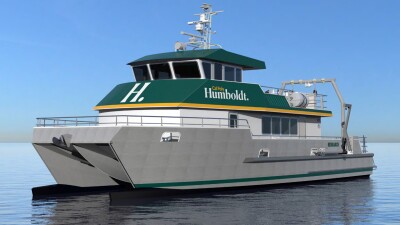A five-year, $706 million dredging project aimed at keeping Savannah, Ga., in the top tier of East Coast ports began Monday, as Great Lakes Dredge and Dock Co. began work on a 17-mile channel from the harbor to the open Atlantic.
The 220’x56’x8’ cutter suction dredge Alaska started the deepening from 42’ to 47’. It is the first phase of the project, expected to continue into summer 2018.
Formally called the Savannah Harbor Expansion Project, the deepening has been some 17 years in the planning, promoted by Georgia’s Congressional delegation to ensure Savannah’s status as one of the top U.S. container ports.
Navigation into Savannah is complicated by the region’s tidal range, at about 7’ among the highest on the East Coast. Deepening and extending the channel, and expanding the Kings Island Turning Basin to 1,600’ will generate 24 million cu. yd. of sediment, according to the corps’ project description.
“Studies demonstrate the deepening will produce substantial economic benefits for the nation by enabling larger and more heavily-loaded vessels to call on the harbor with fewer tidal delays,” according to corps documents. The deepening is calculated to bring “more than $174 million in annual benefits to the nation and has a benefit-to-cost ratio of $5.50 for every $1 invested.”
But half the project cost is taken up for mitigating environmental effects. Some 54% of the dredged sediment will not meet U.S. Environmental Protection Agency standards for ocean disposal, the methodology for handling contaminated sediments that got its start with the big New York-New Jersey harbor deepening projects of the 1990s. That mud will go into contained upland disposal areas, with another 44% destined for an approved ocean disposal site.
Some 2,245 acres of wetlands would be preserved, fish bypasses built at an upstream dam to compensate for the loss of endangered sturgeon habitat in the harbor estuary, and even an oxygen injection system built to compensate for lowered dissolved oxygen levels in the river during dredging.





